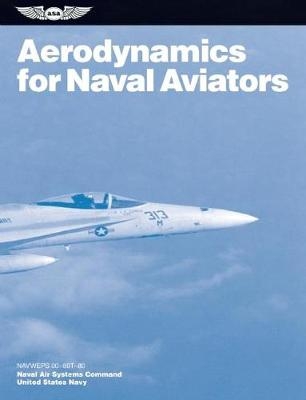
Aerodynamics for Naval Aviators
NAVWEPS 00-80T-80
Seiten
2012
|
Revised
Aviation Supplies & Academics Inc (Verlag)
978-1-61954-017-0 (ISBN)
Aviation Supplies & Academics Inc (Verlag)
978-1-61954-017-0 (ISBN)
- Lieferbar
- Versandkostenfrei
- Auch auf Rechnung
- Artikel merken
The reference document used as the basis for FAA aerodynamics exam questions
This textbook presents the elements of applied aerodynamics and aeronautical engineering which relate directly to flight training and general flight operations. Originally published by the U.S. Navy and revised in 1965. A long-established U.S. Navy publication also used by the U.S. Air Force as well as by the FAA as a source reference for their own publications, for more than 50 years this textbook has been a definitive source that communicates the complexities of applied aerodynamics and aeronautical engineering for both the beginner and the experienced pilot. Flight safety and effectiveness depends greatly on the understanding and appreciation of how and why an airplane flies, and this resource teaches aerodynamic principles, providing the foundation for developing precise flying techniques and operational procedures. The information in "Aerodynamics for Naval Aviators" is applicable to flight training, transition training, reciprocating and turbine-powered airplanes, and general flying operations.
It offers the elements of both theory and application, covering basic aerodynamics, high-speed aerodynamics, airplane performance, stability and control, operation strength limitations, and the application of aerodynamics to specific problems of flying, such as the region of reversed command, wind shear, effects of ice and frost, ground effect, and collision avoidance. Also included are an index and a list of selected references.
This textbook presents the elements of applied aerodynamics and aeronautical engineering which relate directly to flight training and general flight operations. Originally published by the U.S. Navy and revised in 1965. A long-established U.S. Navy publication also used by the U.S. Air Force as well as by the FAA as a source reference for their own publications, for more than 50 years this textbook has been a definitive source that communicates the complexities of applied aerodynamics and aeronautical engineering for both the beginner and the experienced pilot. Flight safety and effectiveness depends greatly on the understanding and appreciation of how and why an airplane flies, and this resource teaches aerodynamic principles, providing the foundation for developing precise flying techniques and operational procedures. The information in "Aerodynamics for Naval Aviators" is applicable to flight training, transition training, reciprocating and turbine-powered airplanes, and general flying operations.
It offers the elements of both theory and application, covering basic aerodynamics, high-speed aerodynamics, airplane performance, stability and control, operation strength limitations, and the application of aerodynamics to specific problems of flying, such as the region of reversed command, wind shear, effects of ice and frost, ground effect, and collision avoidance. Also included are an index and a list of selected references.
The U.S. Navy's Naval Air Systems Command is the division that provides material support for aircraft and airborne weapon systems and is the successor to the Bureau of Naval Weapons.
| Erscheint lt. Verlag | 21.12.2012 |
|---|---|
| Verlagsort | Newcastle |
| Sprache | englisch |
| Maße | 210 x 274 mm |
| Gewicht | 936 g |
| Themenwelt | Natur / Technik ► Fahrzeuge / Flugzeuge / Schiffe ► Luftfahrt / Raumfahrt |
| Technik ► Fahrzeugbau / Schiffbau | |
| Technik ► Luft- / Raumfahrttechnik | |
| ISBN-10 | 1-61954-017-7 / 1619540177 |
| ISBN-13 | 978-1-61954-017-0 / 9781619540170 |
| Zustand | Neuware |
| Haben Sie eine Frage zum Produkt? |
Mehr entdecken
aus dem Bereich
aus dem Bereich
das Grundwissen zur Privatpilotenlizenz
Buch | Hardcover (2024)
Motorbuch Verlag
CHF 55,90


